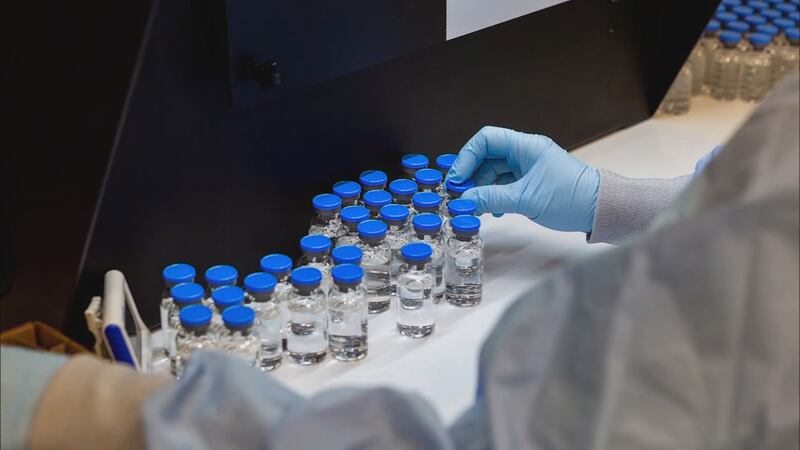ATLANTA — During a visit to Arizona Tuesday, President Donald Trump downplayed the significance of a key forecasting model used by the White House that now shows the U.S. death toll doubling from roughly 70,000 lives in early August to nearly 135,000 as states ease restrictions.
On Sunday, the president revised his predicted death toll from 60,000 Americans as the "minimum number" to a figure "hopefully" remaining under 100,000.
The country is on track to hit the president's prior prediction by the weekend, as more states ease restrictions.
We took the new projections to a global health and epidemiology expert to talk about its significance.
“Over the last few days, there's actually been a few models that have come out. So, there’s a report about a CDC and FEMA model that was recently released, and then late Monday the (University of Washington’s Institute for Health Metrics) model was released out of Seattle as well,” said Dr. Bob Bednarczyk, assistant professor of global health and epidemiology at the Rollins School of public Health at Emory University.
RELATED STORIES:
- No Dragon Con, Pride parades this year, city council rules
- Tyler Perry to reopen studios with temporary housing for crews and staff
- FDA revises antibody testing policy after ‘concerning number’ of faulty tests flood market
“I think one thing that’s consistent between both of those is that they're both predicting an uptick in the number of cases and an uptick in the number of deaths related to COVID-19.”
Bednarczyk told Channel 2 anchor Jovita Moore that the new projections are troubling as Georgia tries to continue to reopen the state’s economy.
“This is concerning, especially as we start to see some loosening of the shelter-in-place restrictions, closures of businesses that have happened, and as the population starts to mix a little bit more, that will give us more opportunity for people to become infected and become ill as we start to progress along through this pandemic,” Bednarczyk said.
“Every day it seems like we’re hearing about more states that are reopening. Everyone is now just going for it as if this pandemic is either subsiding, no longer exists, is not a real threat. What’s the problem here?” Moore asked Bednarczyk.
“There’s really a lot of uncertainties that we need to consider as we’re looking through this. We don’t know exactly when each state will reach its peak, and even when a peak is reached in terms of the number of cases, the number of deaths etcetera. We don’t know exactly how much disease is still spreading in the population,” Bednarczyk said.
“Individuals may be ill but not showing symptoms, so they may not get tested but continue to spread disease. We need to be aware that any of the loosening of these restrictions can lead to an increase in the number of cases of disease.”
Moore asked Bednarczyk about his thoughts that some may want to dismiss the models, saying they don’t mean anything.
“So, the models, you know, are based off of the available data that we have right now. Every day we’re getting more data and even if you compare that with models from a month ago, say for example. A lot of those estimates have changed as we get more data, and as we get a better handle on really what’s happening with this disease, how it’s spreading, and what may happen as we start to loosen some of these restrictions,” Bednarczyk said.
“But a model is just that. It’s a model, it’s an estimate. It gives us (the ability) to plan, but it’s not a crystal ball. It’s not giving us the ability to see exactly what will happen in the future, but hopefully us as public health practitioners and researchers, we can use these data to support the best decisions to be made as we start to move forward into potentially loosening some of these restrictions.”
ABC News contributed to this article.
© 2020 Cox Media Group








